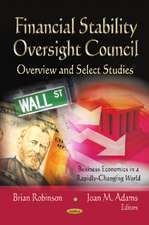Financial Crisis in America
Editat de Raymund T. Ovanhouseren Limba Engleză Hardback – 3 sep 2009
Preț: 646.83 lei
Preț vechi: 884.32 lei
-27% Nou
Puncte Express: 970
Preț estimativ în valută:
123.81€ • 134.53$ • 104.07£
123.81€ • 134.53$ • 104.07£
Carte disponibilă
Livrare economică 31 martie-14 aprilie
Preluare comenzi: 021 569.72.76
Specificații
ISBN-13: 9781606921913
ISBN-10: 1606921916
Pagini: 134
Ilustrații: Illustrations
Dimensiuni: 159 x 234 x 15 mm
Greutate: 0.41 kg
Editura: Nova Science Publishers Inc
ISBN-10: 1606921916
Pagini: 134
Ilustrații: Illustrations
Dimensiuni: 159 x 234 x 15 mm
Greutate: 0.41 kg
Editura: Nova Science Publishers Inc
Cuprins
Preface; Policy Options for the Housing and Financial Markets; Financial Crisis? The Liquidity Crunch of August 2007; Averting Financial Crisis; Would A Housing Crash Cause A Recession?; Index.














